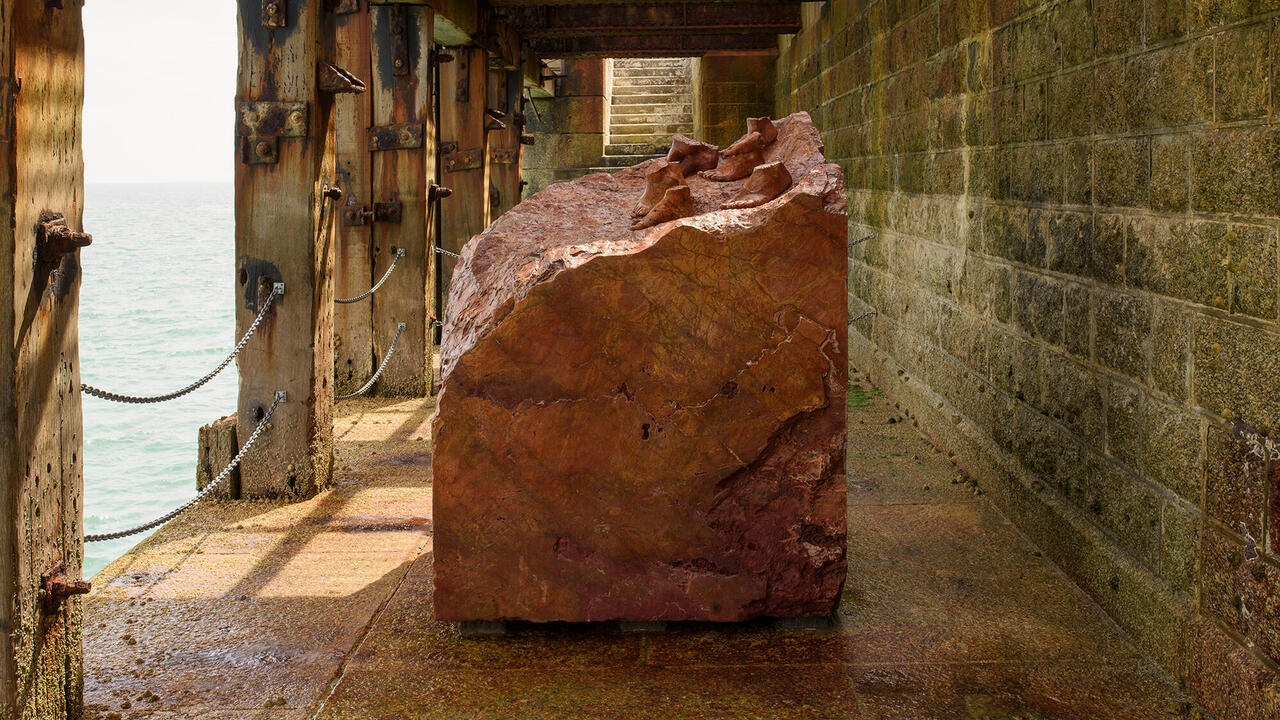The Subterraneans
The inspiration for sci-fi fantasists, underground storage facilities – born of Cold War paranoia – are now big business
The inspiration for sci-fi fantasists, underground storage facilities – born of Cold War paranoia – are now big business
‘There is nothing more treacherous than this attraction down deep abysses’, wrote Jules Verne in A Journey to the Centre of the Earth (1864). At DeepStore – a company that specializes in the underground storage of documents and other artefacts – the whole grotesque scenography of the subterranean has been suppressed in favour of a flatly reassuring slogan: ‘Impervious. Impregnable. Invisible.’ Near Winsford in Cheshire, at the bottom of a working salt-mine, some 110 miles of tunnels bear echoing witness to what the company’s website calls ‘a huge depth of knowledge’. DeepStore is one of a growing number of facilities offering safe, stable conditions for the countless records now required of businesses by UK law. But it is also a bizarrely resonant space — a 200-million-year-old substratum in which the geology of commerce, knowledge and culture is hidden away in cardboard boxes bearing the blue DeepStore logo, then shelved in endless, Warholian series.
During World War II the Public Records Office considered moving its collection to Winsford. (The National Gallery had begun secreting art works down a Welsh mine in 1939.) But the site already stored food, and a sprinkler system installed to protect wartime rations would, if used, have proved ruinous to paper records. In 2004, however, the National Archives – the institutional descendant of the PRO – began transferring its holdings from a Ministry of Defence installation at Hayes, in Middlesex, to DeepStore’s uncannily inert environment. The ideal location for an archive is a place where nothing ever happens: at DeepStore a constant temperature of 14?C and a relative humidity of 62% preclude atmospheric surprises. There are, naturally, no insects or vermin. Dust is filtered out; total darkness prevails. It is as if, but for the occasional shelver, the civilization whose history is preserved there had long declined, leaving the archive floating, bereft, in deep space.
This is essentially the fear (or fantasy) that inspired the underground storage industry in the first place. Its founder was one Herman Knaust, who in 1951 turned over a defunct iron mine near Hudson, New York, to his new company Iron Mountain Atomic Storage. ‘If an atom bomb burst right on top of us’, claimed Knaust (who soon had an office in the Empire State Building and a prominent patron in General MacArthur), ‘it wouldn’t even make a Geiger counter flicker here in the vaults.’ Iron Mountain was so successful, and its impregnable obscurity so celebrated, that it inspired one of the era’s great satires. Leonard C. Lewin’s Report From Iron Mountain (1967) affected to represent the views of a secret think-tank: from deep in the bedrock of the military–industrial complex the ‘authors’ argued that global peace was an economically and culturally deadening outcome, to be avoided at all costs. Today certain right-wing groups in the USA still think the report genuine and doubtless dream, from their own amateur bunkers, of the total war that will one day justify their DIY excavations. The imaginary underground of the mid-20th century was a place of either improbable luxury or terrifying technical austerity. The villains’ lairs of the Bond films are fantastic extrapolations of the hardened vaults built to house governments in the event of nuclear war. In reality, as Tom Vanderbilt points out in his book Survival City (2002), even John F Kennedy’s personal bunker at Palm Beach was a grimly functional retreat. In the film The Andromeda Strain (1971) catastrophe can be kept at bay only from within an antiseptic, underground hell of secure, stratified levels. But the contemporary heirs to the underground men of the Cold War no longer seem to dream the same dreams. They may make the requisite noises about keeping archives safe from terrorist attack, but in reality they nurse strictly economic anxieties, promising, for example, ‘a records management system that will protect [clients] from litigation without interrupting everyday business processes’.
Perhaps, though, there is still some symbolic substance to be mined among the miles of chilled, darkened documents that will continue to accrue beneath our feet. It seems to have less to do with the iconography of the atom-age shelter than with another receptacle that appeared in the same period: the time capsule. What are these vast crypts if not images of our own passing away, our frail purchase on the future? It may even be possible to find some funereal consolation in the otherwise dispiriting process by which some of the world’s greatest photographic collections have been interred. Most famously, in 1995 Bill Gates’ company Corbis bought and buried (in an Iron Mountain depository) the Bettmann archive; the planned digitization of these photographs has been remarkably slow.
But among the images currently in suspended animation is the famous photograph of Orson Welles performing The War of the Worlds for radio in 1938. Viewers of the latest awkward update of that story will recall that Steven Spielberg’s aliens have been buried for millennia before emerging, futuristic beings from the deep past. Maybe one day, when their digital twins have expired, Gates’ frozen archive (a photographic Lascaux) will surface once more, baleful and bent on revenge.















